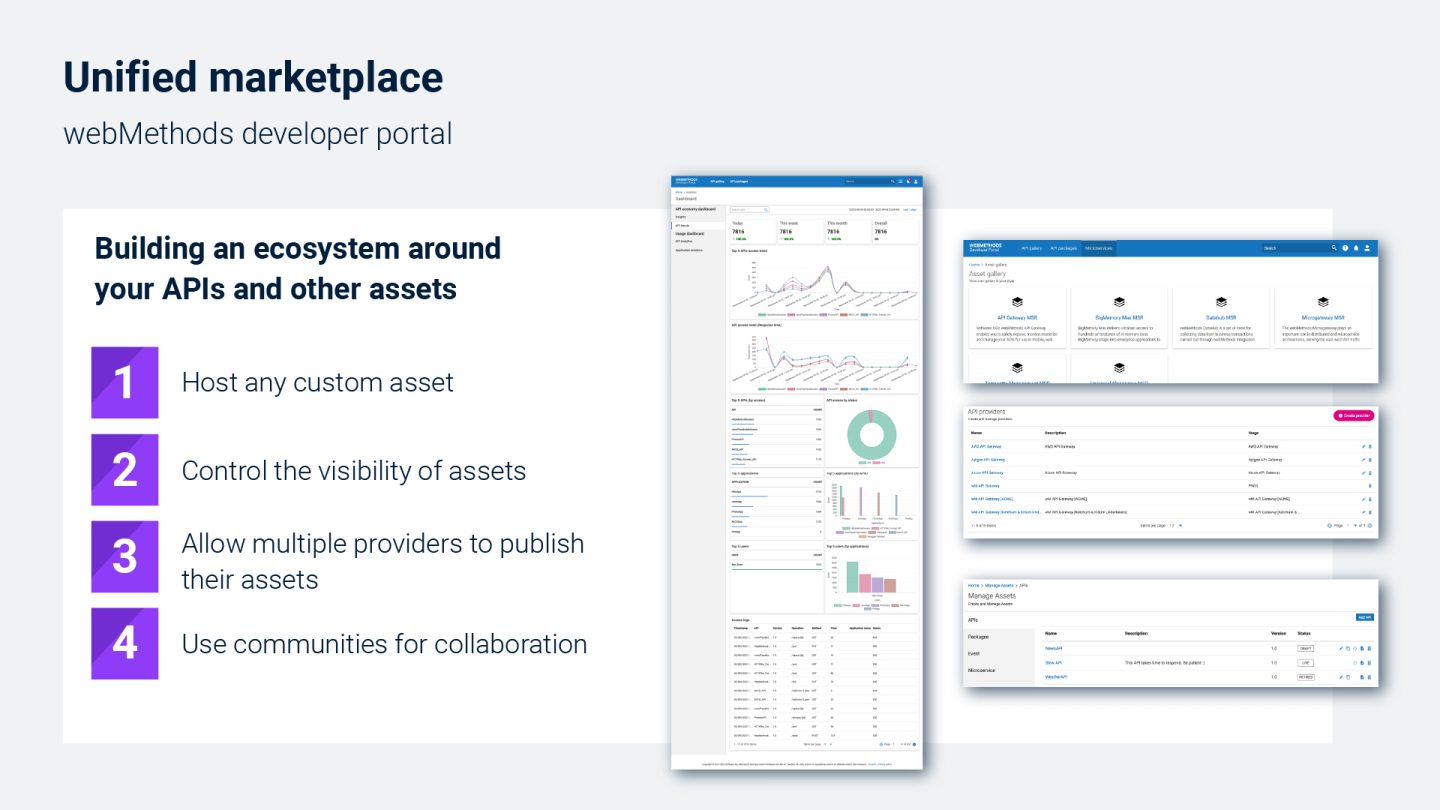New API and Integration benefits in the webMethods 10.15 release
With a focus on developers, the new webMethods 10.15 release helps to move and integrate seamlessly between different environments. The updates can help businesses become more efficient in their API and integration strategies.

API management is now a crucial aspect of digital transformation that companies need to invest in so that they can use their APIs properly. The way you control how APIs are used at your company – either how the APIs you publish are used by customers and partners, or the way you manage APIs within your company, can have a powerful impact, either positive or negative, on your API security, your revenue, and your product innovation potential. The more APIs your company uses, the more complex things can become. But it can be a lot simpler when you’re using a unified API platform like webMethods.
With a focus on developers, the new webMethods 10.15 release provides significant updates that simplify the process by which developers can find and create new APIs in their organizations, rapidly extend integrations with a 360-degree partner view, and save time by automating software deployments in private clouds.
The first of these updates is the new Unified API Marketplace in webMethods Developer Portal, a new hub for APIs (all APIs, including those deployed in third party gateways such as Apigee or AWS). Related assets such as microservices, B2B connections, and connectors needed by the API can be hosted in the marketplace as well. Visibility can be controlled for communities to promote collaboration, and a built-in set of states such as draft, live and retired, can be applied so it’s easy to tell where APIs are in their lifecycle. Traditional API portals have often been difficult to customize, inflexible in their functionality, and don’t play well with all API gateways. However, webMethods Developer Portal offers a chameleon-like ability to appear as a branded website, as well as extensive features to encourage interaction.

The Developer Portal enables companies to create a rich ecosystem for APIs to be shared and promoted. It comes with a fully functional UI, but you can also create your own – you have a choice. You’ll be able to build and grow a true API marketplace with interactive communities that collaborate on all API-related assets throughout the API lifecycle, which is a win-win for both developers and their business counterparts alike.
The second major new feature is the Embedded Workflow Editor within webMethods.io Embed, a special integration product that can be embedded in an application, enabling sophisticated integration capabilities to be a part of another offering. For many businesses, being able to access apps and data is one aspect of a larger offering they want to provide customers. But building those integrations in-house is time-consuming and requires ongoing maintenance and support. Being able to plug in a high-quality integration tool that can be deployed multiple ways saves money and increases the quality of what the business can deliver. webMethods.io Embed makes webMethods integration a product you can drop into any application, extending your product’s reach in both functionality and business value.

The third new feature is the webMethods.io B2B 360 Degree Trading Partner View. In day-to-day B2B operations, knowing what is going on with your trading partners is very important. Finding all the assets associated with a single partner can be a tedious task, especially if the partner has complex capabilities. webMethods.io B2B makes it possible for businesses to interact with partners and suppliers over complex EDI and XML protocols in a reliable and automated way in the cloud. The 360 Degree Trading Partner view delivers one total view of all objects related to a trading partner, so you can quickly see all communication channels, transactions, queues, and processing rules. You can easily navigate the tool with a simple web-based graphic interface. The 360-degree partner view is an essential tool for full visibility across your partner transactions.

Finally, the fourth key new feature of the release is the webMethods Container Registry. webMethods container registry is a new way of delivering our products. Many customers are moving to private cloud for reasons of security, data protection, and control. But deploying applications in the cloud is a complex process with many new tools, requiring advanced expertise. Automation is critical to ensuring high-quality releases within reasonable timeframes. The container registry reflects an understanding of how software is deployed today and simplifies the work of IT, creating a predictable automated CI/CD pipeline with minimal room for manual error. Faster release cycles for patches and easier installation ensure higher quality solutions, and products that are already delivered in containerized form can save effort and cost for IT.

These four main highlights of webMethods 10.15 further exemplify the product vision of webMethods: to help support the digital backbone of a business, enabling data to move and integrate seamlessly between different environments. The updates in the latest webMethods release can help businesses become more efficient in their API and integration strategies.
Want to find out more? There are many additional new features to discover in the remainder of the release. Register for our webinar where Subhash Ramachandran, SVP, Product Management, will take us through the highlights of the release.
